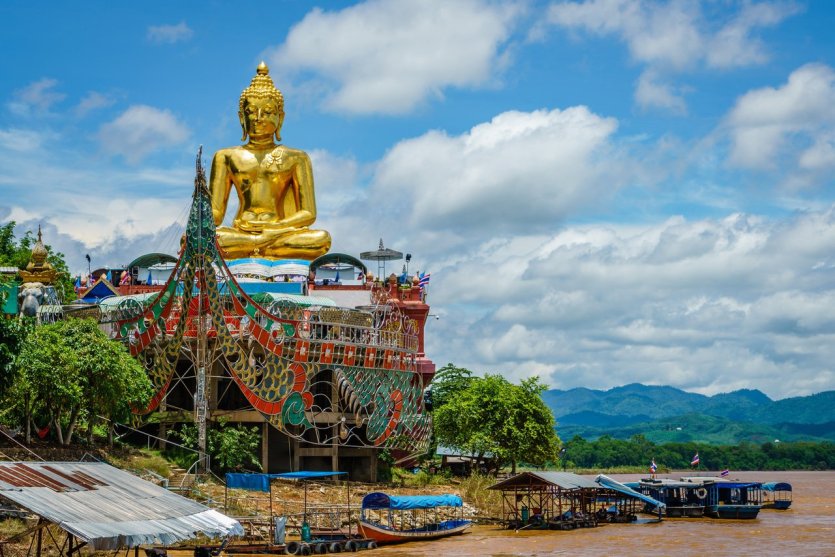
Thailand is home to a great diversity of landscapes: from the north to the south, the climate changes and a true palette of colors is revealed. If the southern part of the country enchants travelers with its paradise islands like Koh Lanta or Koh Lipe and their white sand beaches, the north seduces nature and culture lovers. There are exceptional landscapes and a generous nature still spared from the mass tourism sometimes encountered in the south. An amazing heritage is also to discover in the northern part, in particular Wat Burapha Phiram and its impressive giant Buddha. From Chiang Rai to Lampang, here are our must-sees in the north of Thailand. If you are planning a trip to the south of the country, click here to discover our favorites.
Wat Burapha Phiram, the temple of the giant Buddha
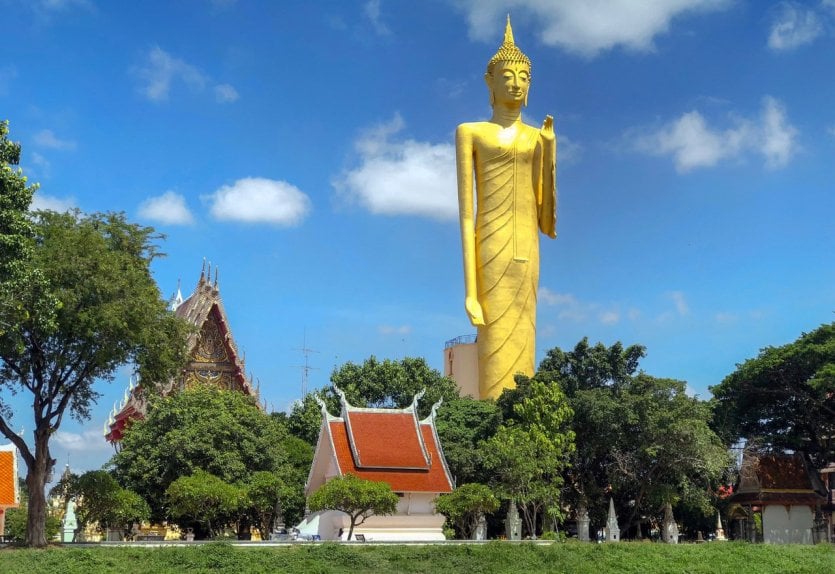
The city of Roi Et is overhung by the highest statue of Buddha of Thailand, on the site of Wat Burapha. Standing in a prayer position, the Buddha rises more than 67 m above the ground, giving the impression of watching over the surroundings. Built in the 70s, this giant statue is known as Luang Pho Yai. Behind it, there is a staircase that allows you to climb up to its knee and access a remarkable panorama of the city.
Sukhotai, the ancient capital
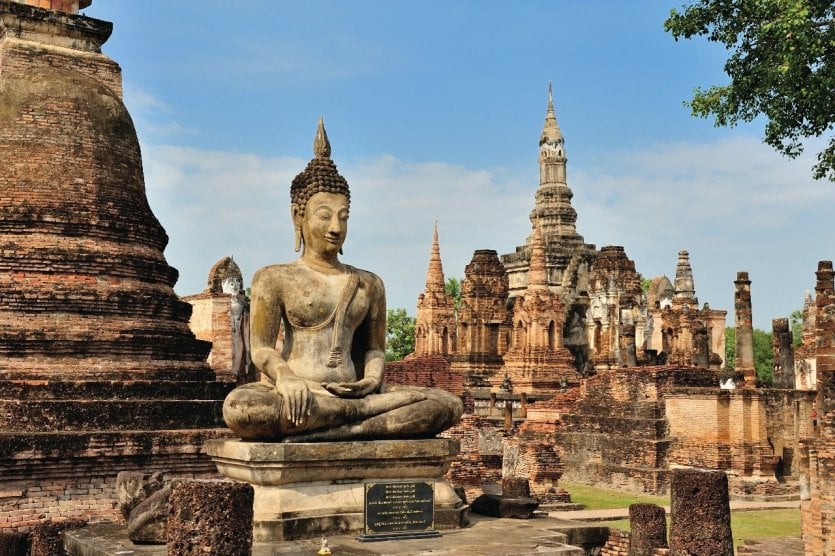
For 700 years, Sukhotai was the official capital of Siam, the former name of Thailand. Steeped in history, it has many remains classified as a UNESCO World Heritage Site, which today form a beautiful archaeological park of 70 m². Opt for a visit in November, during the Thai festival of Loy Kratong. The inhabitants come to deposit krathongs, small rafts of flowers, on the principal waterways of the site which remains open free for the occasion. The evening ends with a fireworks display, the atmosphere is festive and the setting exceptional.
Wat Rong Khun, an eccentric temple
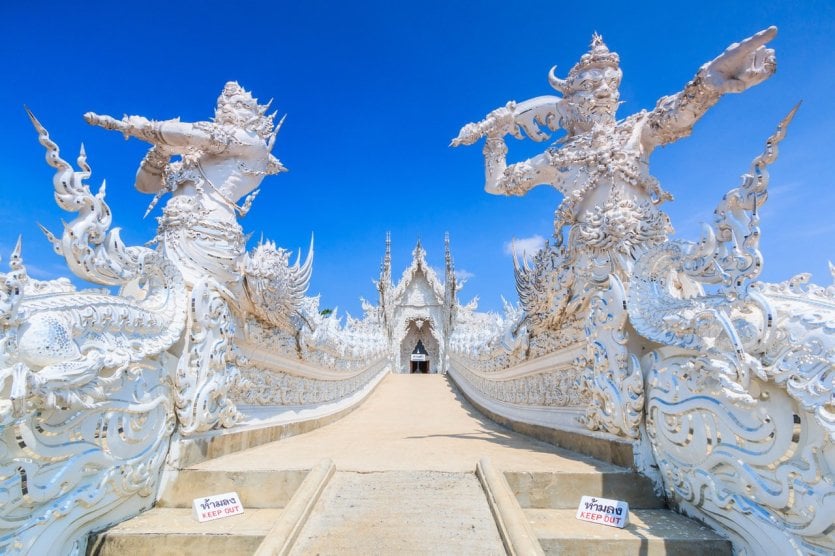
A jewel of contemporary Thai architecture, Wat Rong Khun is composed of more than a thousand pieces of mirror that make it sparkle in the sun. Built in 1998, it withstood the 2012 earthquake, establishing itself as one of the major buildings in the region. Like the country, the one that has been renamed "White Temple" balances between tradition and modernity, proudly displaying a fresco representing the life of Buddha mixed with the adventures of Batman or Spiderman. To be discovered!
Chiang Rai and the Golden Triangle
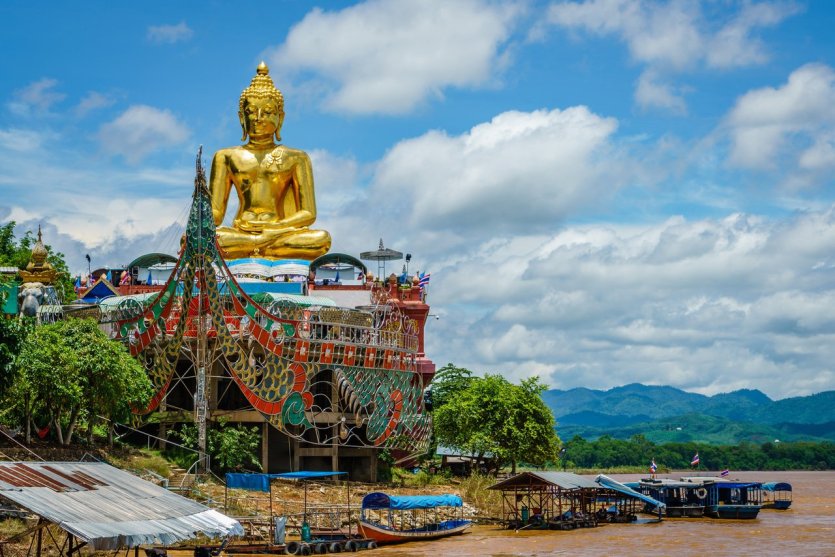
The northernmost region of the country, Chiang Rai is located on the borders of Myanmar and Laos, forming what is known as the "Golden Triangle" for its opium production. The province of Chiang Rai is an ideal stopover to reach the north of South-East Asia and is home to small picturesque villages where, far from the hustle and bustle of the coastline, you can meet the locals. It is in Sob Ruak that you will reach the central point of the Golden Triangle where the three borders meet. Do not hesitate to visit its "Hall of Opium", a very instructive museum dedicated to the opium traffic in the region.
Paï, a bohemian atmosphere
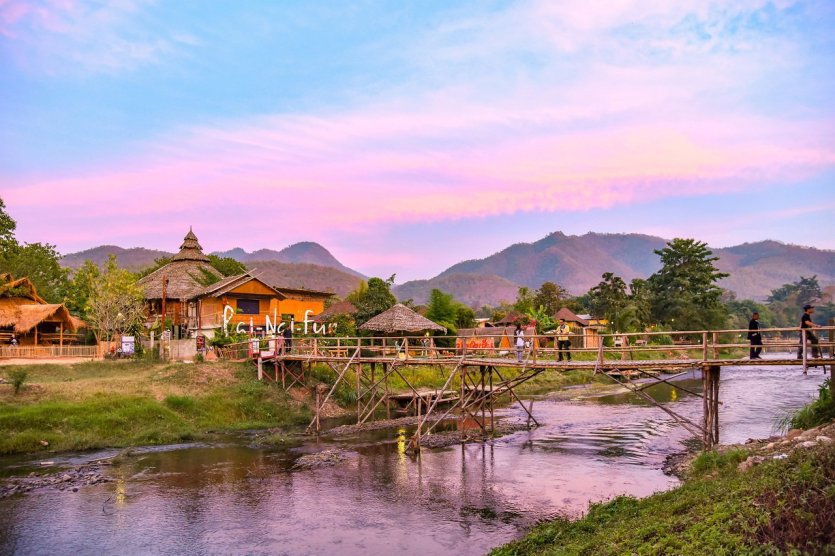
Between Mae Hong Son and Chiang Mai, Paï is a charming mountain village where local tribes such as the Lisu or the Lahu live. However, it is true that Pai has lost its authenticity in recent years as the number of tourists has increased. Today, it is a pleasant stopover to meet other travelers coming from all over the world in search of a bohemian atmosphere. Many treks start in Pai, allowing to explore the peaceful nature of the surroundings.
Nan, a natural province
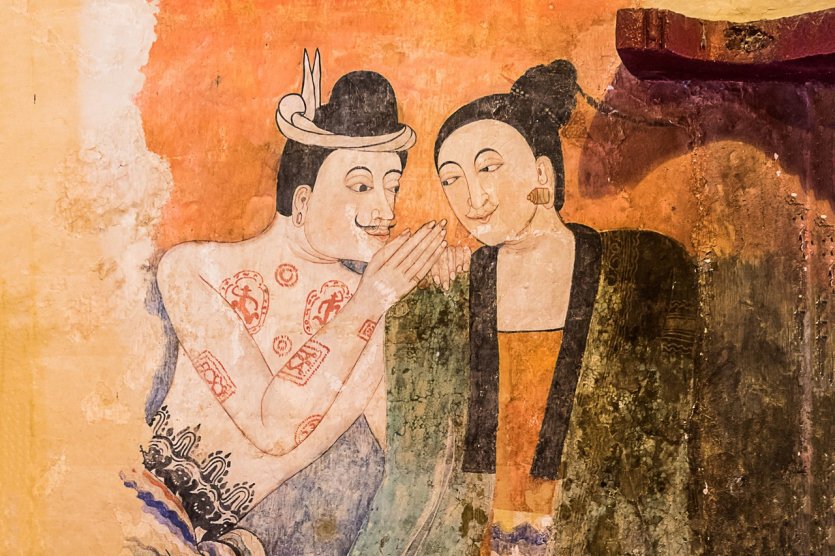
On the borders of Laos, Nan is a cosmopolitan region where the majority of the population is of Laotian or Chinese origin. Little known, the province of Nan is home to splendid mountain landscapes and especially a preserved nature that can be discovered in the nearby Mae Charim National Park. One should not neglect its downtown area and the Wat Phumin temple. Its frescoes, especially the "whispering" one where a man whispers in a woman's ear, have become the symbols of the village.
Lampang, in the heart of Lanna architecture
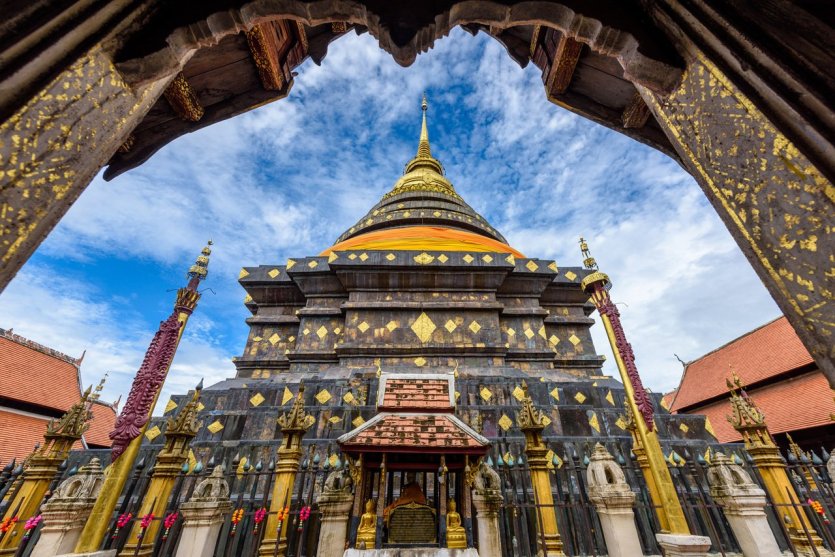
South of Chiang Mai, Lampang has all the charm of Chiang Mai, but is off the beaten track. Authentic, Lampang is also called the "city of horse-drawn carriages": opt for this original means of transportation during your visit. Apart from these horse-drawn carriages, Lampang is best known for its Lanna architecture, typical of its former 13th century Asian kingdom. Among the inescapable of the city, Wat Phrathat Lampang Luang is worth the detour. Located at about twenty kilometers from Lampang, this wooden temple is one of the best preserved Lanna buildings in Thailand.
Doi Khun Tan National Park
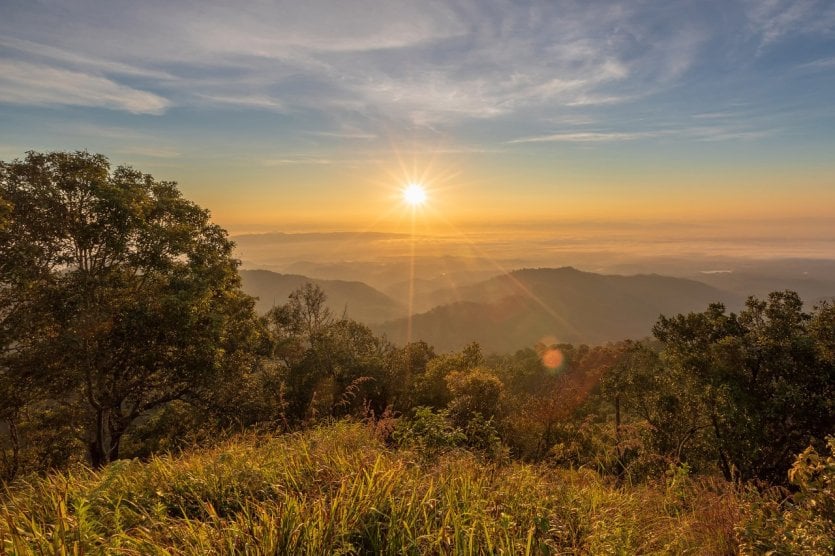
Doi Khun Tan National Park separates the Chiang Mai valley from the Lampang valley and stretches along a mountain range crossed by the longest tunnel in Thailand. From Chiang Mai, one reaches the park by train. It is possible to rent a bungalow to spend the night in the heart of this preserved nature. These paths lined with orchids and ginger offer beautiful walks to reach the Tat Moei waterfall or one of the peaks of the mountain range, the highest culminating at 900 m.
Chae Son National Park, the land of waterfalls
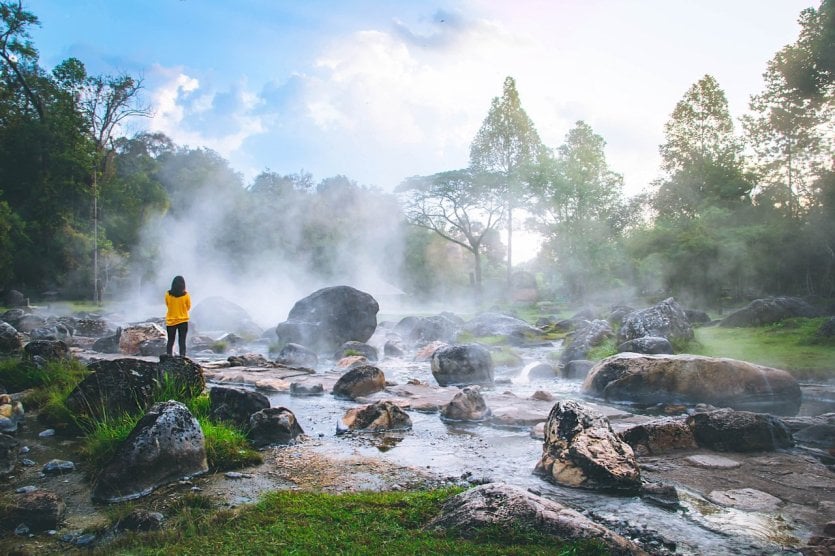
Chae Son National Park is located 75 km from Lampang. It has many caves, waterfalls and hot springs where it is sometimes possible to bathe at a cost of 20 baths. The water is sometimes so hot that eggs are sold nearby, you can cook them directly in the waterfall in about fifteen minutes! As in many national parks, bungalows are also available for visitors to spend the night in the green.
Chiang Mai, the Rose of the North
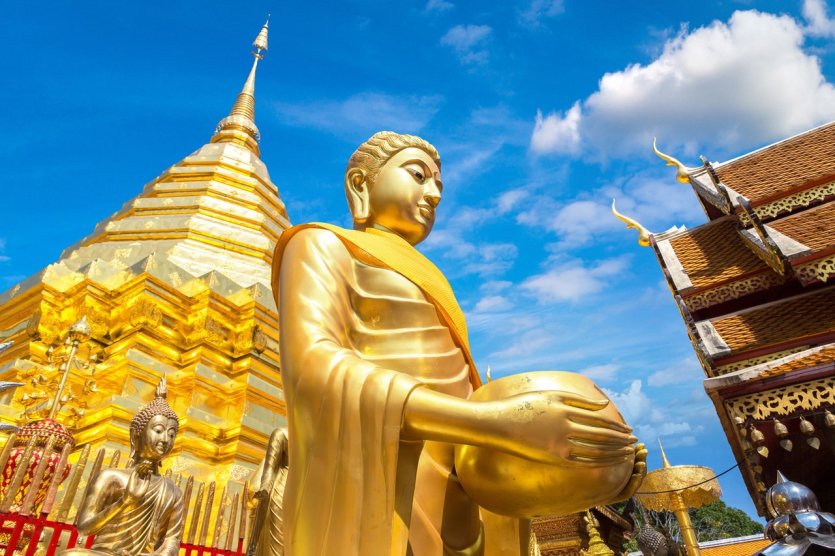
The development of tourism in Chiang Mai in recent years does not detract from the charm and cultural interest of the city known as the Rose of the North. Its Wat Phrathat Doi Suthep is the most venerated temple of the north of Thailand by the Buddhists, it is worth in itself the detour. Covered with gold, it sparkles in the sun and offers a beautiful view of Chiang Mai to those who climb to the top. For this, two possibilities: to climb its 200 steps or to borrow a streetcar. If you come as a couple, know that the legend wants that by climbing the 200 steps together you are linked forever: a beautiful test to share!



